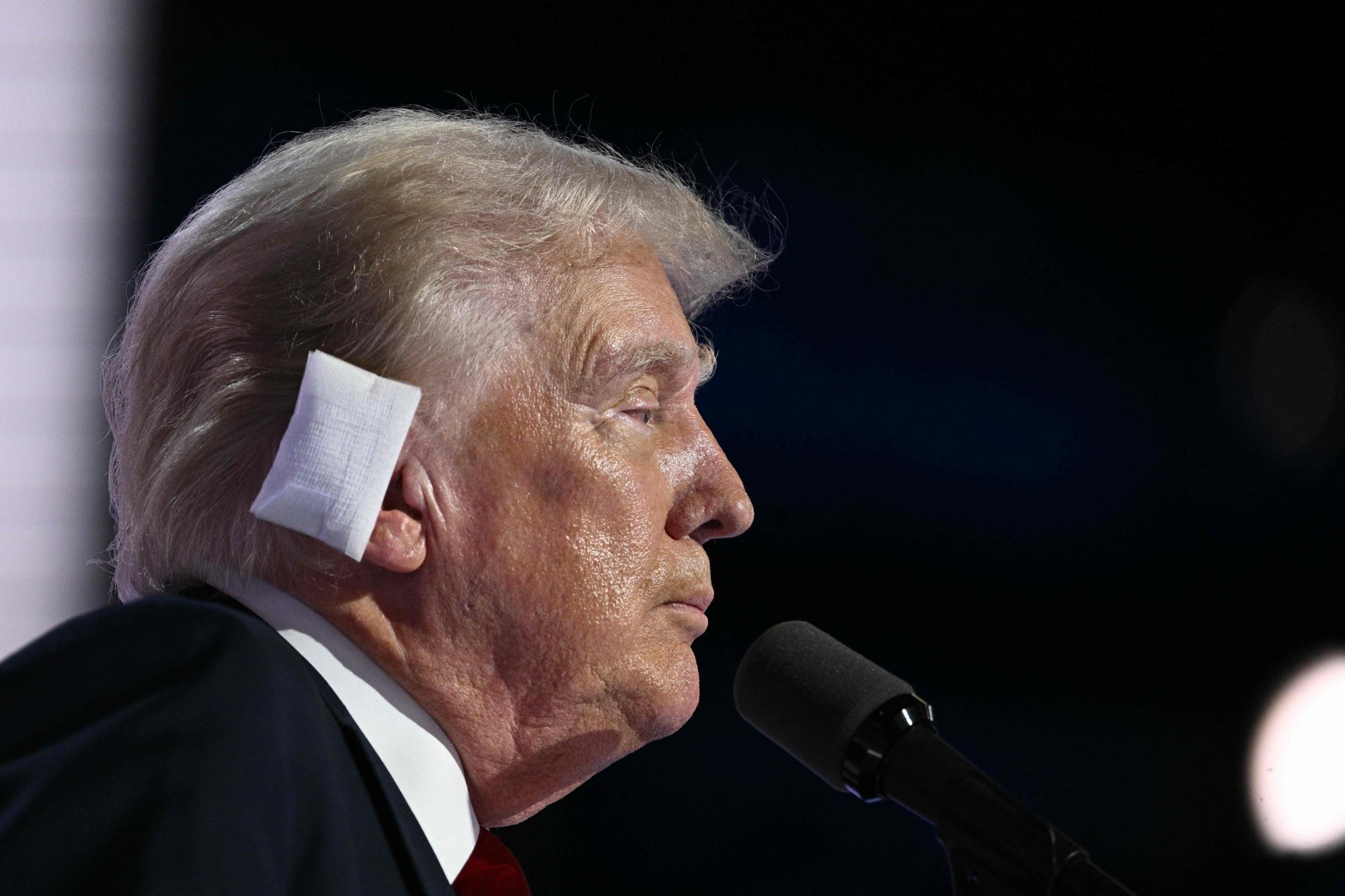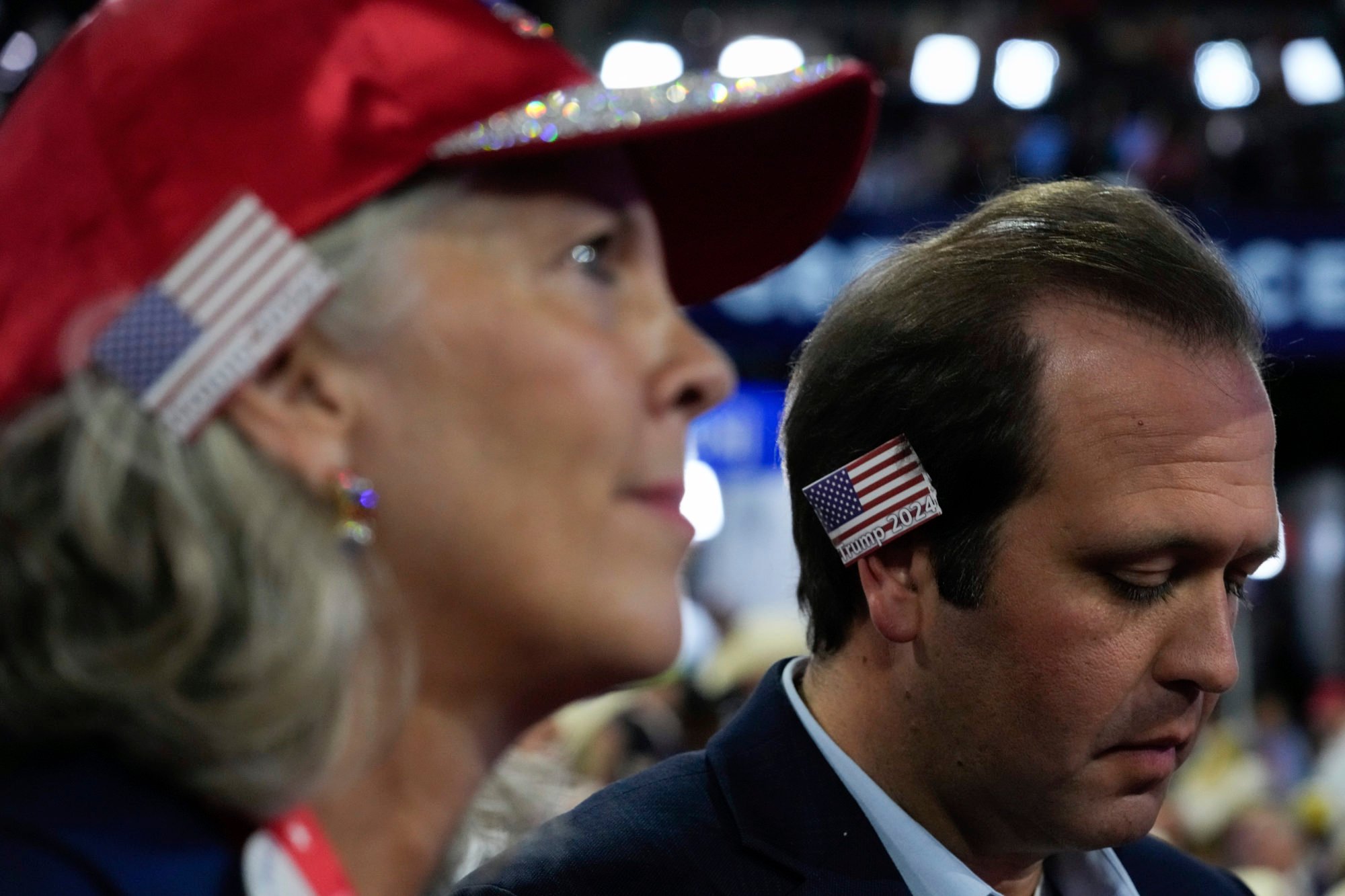After surviving an assassination attempt, former US President Donald Trump made his first public appearance two days later, on the first night of the Republican National Convention.
He entered the convention centre wearing a massive bandage on his right ear, where the bullet wounded him. In the days that followed, some of his supporters started sporting bandages of their own.
Like donning MAGA hats, “it facilitates a sense of belongingness and a sense of connection,” said Dr Catherine Nobile, a clinical psychologist in New York. “We’re all in this together, we’re all behind the same idea.”
The bandages go a step beyond Trump shirts and lawn signs, said Dr Angie Corbo, chair of communications studies at Widener University.
This is a classic example of co-regulation – a coping mechanism, well-documented in psychology, that can soothe the nervous system.
Mimicry has always been a gesture of devotion and support. Take people shaving their heads in solidarity with cancer patients.
It’s also not new in the world of politics. In 2017, for example, supporters of Russian opposition leader Alexei Navalny painted their faces green after an attacker threw antiseptic green dye into his face.

For supporters of Navalny and now Trump, this performative act of imitation is a sign of solidarity, Nobile explained: “It’s saying, ‘We matter, and you can’t take that away from us.
“‘My feelings about myself, the world around me, this culture, politics at large, it’s an opinion that has validity and that’s not going to be harmed.’”
But this goes beyond a political statement of defiance and allegiance. Signs of solidarity are also self-soothing.
Humans have a standard way of processing overwhelming emotions and stress: co-regulation, a technical term for hugging, talking, or touching.
Evidence suggests co-regulation, such as wearing the same bandages, can “create a sense of understanding and belonging that can calm the nervous system”, Nobile said.
“Not every Trump supporter can come and hug one another,” she added. “The ear piece that they’re all putting on, it could be a symbol in an effort to co-regulate as a community.”
Corbo said one of Trump’s strengths is his ability to wield media to his advantage. He expressed excitement at getting an iconic photo moments after being shot because he understood its impact. Fans are already getting tattoos of said photo.
The ear bandages portray a different, softer message – one that could make his audience feel more connected to him.

To match the mood, Trump’s tone and demeanour were softer throughout the RNC. Recapping the assassination attempt, he was subdued and sombre. Then, he paid tribute to Corey Comperatore, a man who died during the rally, by hugging his firefighter uniform.
“When he kissed the helmet, anybody who is in a parasocial relationship with him felt the embrace,” Corbo said.
The visible bandage further elicits his supporters’ sympathy, concern, and togetherness.
“I’m not sure how long they’ll last, but he might see the value of having the softer and the strong in combination with one another,” she said.
This article was first published by Business Insider


